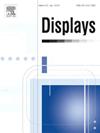Machine learning for anterior cruciate ligament and meniscus analysis in knee MRI: A comprehensive review
IF 3.4
2区 工程技术
Q1 COMPUTER SCIENCE, HARDWARE & ARCHITECTURE
引用次数: 0
Abstract
Anterior Cruciate Ligament (ACL) and meniscal injuries are prevalent in knee joint problems and are closely associated with osteoarthritis. With the rapid development of machine learning (ML) in knee magnetic resonance imaging (MRI) interpretation, a surge of research on ACL and meniscus analysis has emerged. However, there has been a noticeable absence of comprehensive reviews that can offer detailed classification, analysis, and comparison of the rich existing methods. To fill this gap, we provide an overview of ML methods applied in ACL and meniscus MRI analysis between 2013 and 2024. Sixty-seven papers covering tasks such as classification, segmentation, localization, and prediction are investigated and classified from the perspective of the ML method. For conventional ML methods, we summarized four kinds of handcrafted MRI features related to the ACL and meniscus, along with corresponding ML models. Meanwhile, we categorize the deep learning methods into 11 types according to the network structures for various tasks. Based on the categorization, we further compare the main methods and analyze the critical factors for existing successful models. Current trends and future directions in this field are also elaborately discussed. Serving as a technical reference, this survey hopes to inspire researchers interested in this field in method selection and design, which ultimately advances ML in clinical applications of ACL and meniscus.
膝关节 MRI 中用于前交叉韧带和半月板分析的机器学习:全面回顾
前交叉韧带(ACL)和半月板损伤是膝关节常见的问题,并与骨关节炎密切相关。随着机器学习(ML)在膝关节磁共振成像(MRI)解释中的快速发展,对前交叉韧带和半月板分析的研究激增。然而,对丰富的现有方法进行详细的分类、分析和比较的综合综述明显缺乏。为了填补这一空白,我们概述了2013年至2024年间ML方法在ACL和半月板MRI分析中的应用。从机器学习方法的角度对67篇涉及分类、分割、定位和预测等任务的论文进行了研究和分类。对于传统的ML方法,我们总结了四种与前交叉韧带和半月板相关的手工MRI特征,以及相应的ML模型。同时,我们根据不同任务的网络结构将深度学习方法分为11种类型。在分类的基础上,进一步比较了主要方法,分析了现有成功模型的关键因素。并对该领域的当前趋势和未来发展方向进行了详细的讨论。本研究旨在作为技术参考,启发对该领域感兴趣的研究人员在方法选择和设计上,最终推动ML在ACL和半月板的临床应用。
本文章由计算机程序翻译,如有差异,请以英文原文为准。
求助全文
约1分钟内获得全文
求助全文
来源期刊

Displays
工程技术-工程:电子与电气
CiteScore
4.60
自引率
25.60%
发文量
138
审稿时长
92 days
期刊介绍:
Displays is the international journal covering the research and development of display technology, its effective presentation and perception of information, and applications and systems including display-human interface.
Technical papers on practical developments in Displays technology provide an effective channel to promote greater understanding and cross-fertilization across the diverse disciplines of the Displays community. Original research papers solving ergonomics issues at the display-human interface advance effective presentation of information. Tutorial papers covering fundamentals intended for display technologies and human factor engineers new to the field will also occasionally featured.
 求助内容:
求助内容: 应助结果提醒方式:
应助结果提醒方式:


